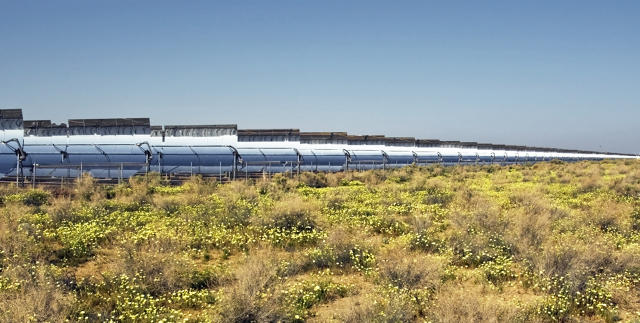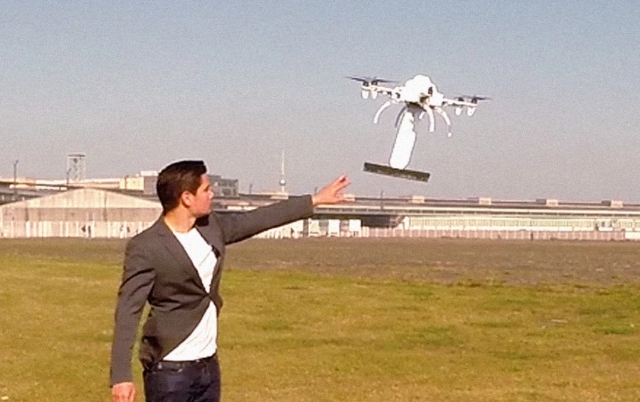Some of the best places for solar power–like the Mojave Desert, where the world’s largest solar thermal farm sprawls over 3,500 acres–also happen to be dry and dusty. Fine layers of sand or grime often stop equipment from stop working well. Now there’s a new way to keep panels clean: quadcopters that fly back and forth carrying little brushes.
The technology, which can help solar panels pump out as much as 35% more power, was developed by a German engineer who first started experimenting with panel-cleaning robots at the age of 13. At the time, solar power was less widespread, and manufacturers claimed that panels would soon clean themselves. “That was wrong, I found out later, and we began re-engineering the product,” says designer Ridha Azaiz.

Drones, it turned out, were perfect for the task. “Now that drone technology has evolved so quickly, the job can be done better,” Azaiz says. “They’re quicker, and unlike robots, you don’t need to move them from row to row. Imagine the huge mirror farm in the Mojave Desert–with robots, you’d have to move manually from mirror to mirror. This is really hard work. With drones, you can cross the whole solar farm, and maintain the plant from above.”
Drones are also gentler on delicate solar equipment than robots that move around with wheels or suction cups–only the brush touches a panel–so they can clean more often. No human help is needed, apart from charging batteries. The drones can also clean without water, a critical boon in desert areas where the technology can save both resources and money.
“It’s possible to maintain solar technology at a fraction of the cost,” says Azaiz. “In Chile, where we’re testing our product, water isn’t that expensive, but the transportation of water is–they have to fill up a big utility car to get the water on site in the desert. In the Middle East, the desalination process is quite expensive. We really see a great multiplying effect here.”
It’s likely that something like the drones will always be needed to keep solar panels clean, since “self-cleaning” panels can’t wipe off dust by themselves. “The surface can be manipulated so it supports cleaning, but it can’t apply mechanical forces to particles to make them move away–you still need an external source, be it wind or be it a robot or drone,” says Azaiz.
After continuing to test the drones, Azaiz’s startup, Aerial Power, plans to start selling his drone sweepers within a year. Though the drones may eventually fly over rooftops in cities, the company is starting with larger solar installations, where it’s easier to deal with regulations about flying, and it’s easier to navigate.
“It’s not a chaotic environment. You don’t have buildings in between, so it’s really simple to navigate autonomously on the farm,” Azaiz explains. “Panels are also often mounted on the ground so they’re easier to access. We want to enter the market as quickly as possible, so we want to keep the barrier low.”
Source: Fast Co Exist


He have developed a water washing system that can be carried by Multi-copter.
Brilliant idea. I was blown away with this.